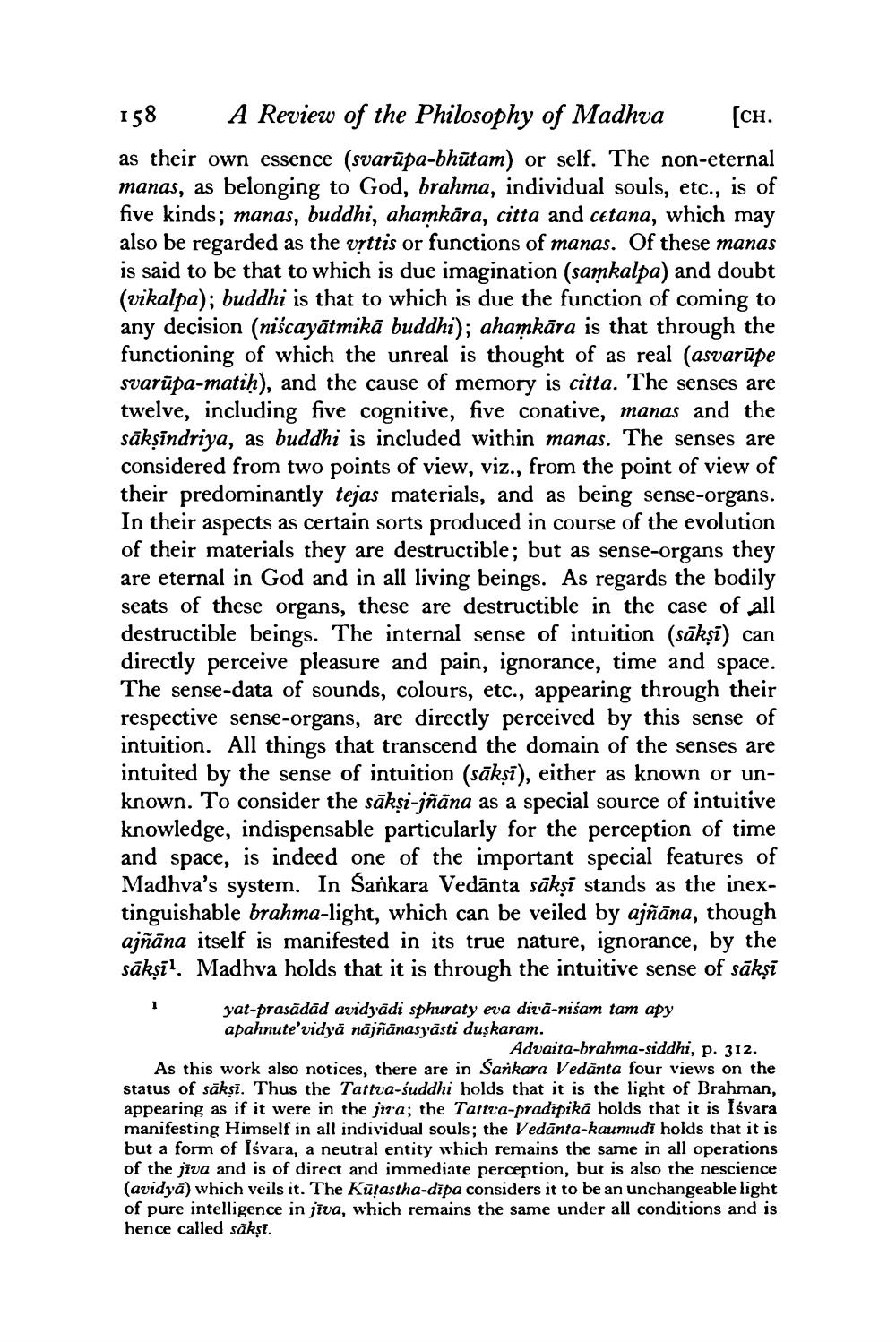________________
158 A Review of the Philosophy of Madhva [CH. as their own essence (svarūpa-bhūtam) or self. The non-eternal manas, as belonging to God, brahma, individual souls, etc., is of five kinds; manas, buddhi, ahamkāra, citta and cetana, which may also be regarded as the vrttis or functions of manas. Of these manas is said to be that to which is due imagination (samkalpa) and doubt (vikalpa); buddhi is that to which is due the function of coming to any decision (niścayātmikā buddhi); ahamkāra is that through the functioning of which the unreal is thought of as real (asvarūpe svarūpa-matiḥ), and the cause of memory is citta. The senses are twelve, including five cognitive, five conative, manas and the sāksīndriya, as buddhi is included within manas. The senses are considered from two points of view, viz., from the point of view of their predominantly tejas materials, and as being sense-organs. In their aspects as certain sorts produced in course of the evolution of their materials they are destructible; but as sense-organs they are eternal in God and in all living beings. As regards the bodily seats of these organs, these are destructible in the case of all destructible beings. The internal sense of intuition (sākṣī) can directly perceive pleasure and pain, ignorance, time and space. The sense-data of sounds, colours, etc., appearing through their respective sense-organs, are directly perceived by this sense of intuition. All things that transcend the domain of the senses are intuited by the sense of intuition (sākşi), either as known or unknown. To consider the sākṣi-jñāna as a special source of intuitive knowledge, indispensable particularly for the perception of time and space, is indeed one of the important special features of Madhva's system. In Sankara Vedānta sākşi stands as the inextinguishable brahma-light, which can be veiled by ajñāna, though ajñāna itself is manifested in its true nature, ignorance, by the sākṣīl Madhva holds that it is through the intuitive sense of sākṣī
yat-prasādās avidyādi sphuraty eva dir'ā-nisam tam apy apahnute'vidyā nājñānasyāsti duskaram.
Advaita-brahma-siddhi, p. 312. As this work also notices, there are in Sankara Vedānta four views on the status of sāksi. Thus the Tattva-buddhi holds that it is the light of Brahman, appearing as if it were in the jira; the Tattra-pradipikā holds that it is Isvara manifesting Himself in all individual souls; the Vedānta-kaumudi holds that it is but a form of Isvara, a neutral entity which remains the same in all operations of the jiva and is of direct and immediate perception, but is also the nescience (avidyā) which veils it. The Kūtastha-dīpa considers it to be an unchangeable light of pure intelligence in jīva, which remains the same under all conditions and is hence called sākṣī.




